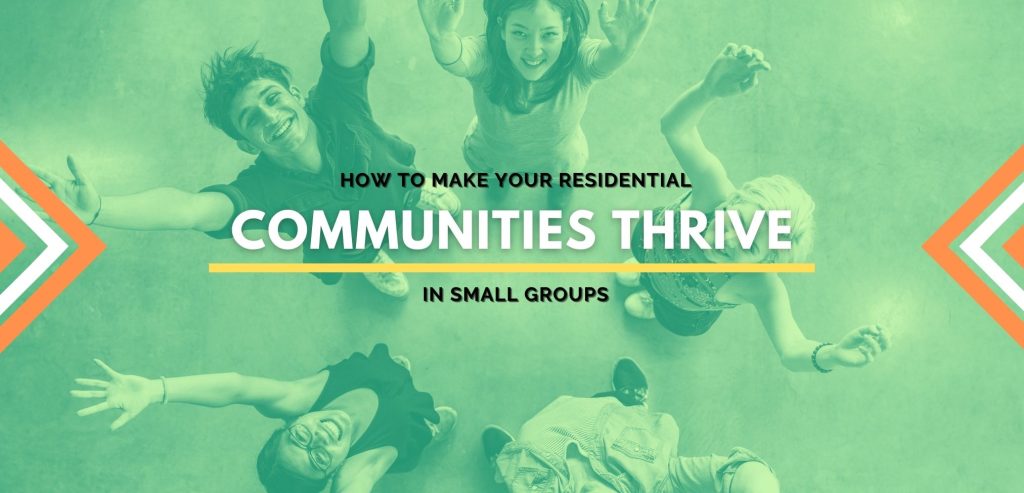It’s 2020, and nothing is as it was a year ago. In years’ past, college and university residential communities would have been teeming with packed lobbies, movie nights with dozens – or more – residents packed into community spaces within the residence hall. Today, these busy, large-scale campus events are memories of the not-so-distant past, replaced by, in the best cases, small group activities led by student residential leaders.
While this shifting dynamic has been received by most students as temporary, leaving them eager and anxious to a return to the campus experience they once knew, there are some great strategies for making residential communities thrive in these small groups.
 Your Greatest Asset: Resident Assistants
Your Greatest Asset: Resident Assistants
More than any other generation before them, Gen Z is heavily influenced by the decision-making and recommendations of their peers, and are much more likely to acknowledged and respond to communication from peers. This means one of your greatest assets for community building any time – and especially in days and months that are limited to small group and interpersonal communication – is your community of peer leaders.
RAs can reach residents in ways that professional staff may struggle with, and, when coupled with the advisement and supervision of trained professional staff, can be powerful allies in creating thriving communities.
Over Communicate, but Don’t Overwhelm
Feelings of isolation are more prevalent than ever, and with more limited contact with residential students, this can be an issue for students living away from home for the first time. Use all of the tools at your disposal to communicate often. Students want to feel connected, even outside of their small groups, and know that the efforts of those living closest to them are part of something larger. Frequent communication from the university, residence life, and the resident hall leaders will make a small group feel larger.
Empower Your Peer Leaders to Host (Safe) Events
College is challenging enough. Add a global pandemic, isolation, and feelings of lost experiences, and it can be downright brutal. After long days on Zoom-led lectures, residence are without a doubt craving fun – and craving a break from Brady Bunch-style headshot tiles via Zoom.
Outdoor events, lawn games with staggered attendance times, and pop-up coffee shops with social distancing can help bring a sense of normalcy without another Zoom call.
And Remember: All is Not Lost
The on-campus living experience isn’t currently what it could be for many residential students, but that doesn’t mean this academic year is a wash. Driven by a multitude of factors, student success can be measured in a number of ways, not the least of which can be the sense of community and belonging found in residential living. With safe protocols in place, and a thoughtful approach to thinking outside the box, residential students can thrive in their small groups of their closest neighbors.
